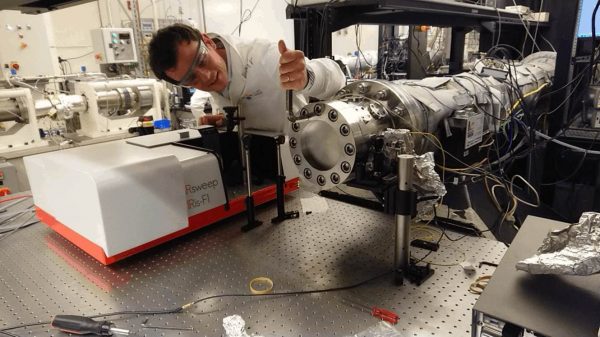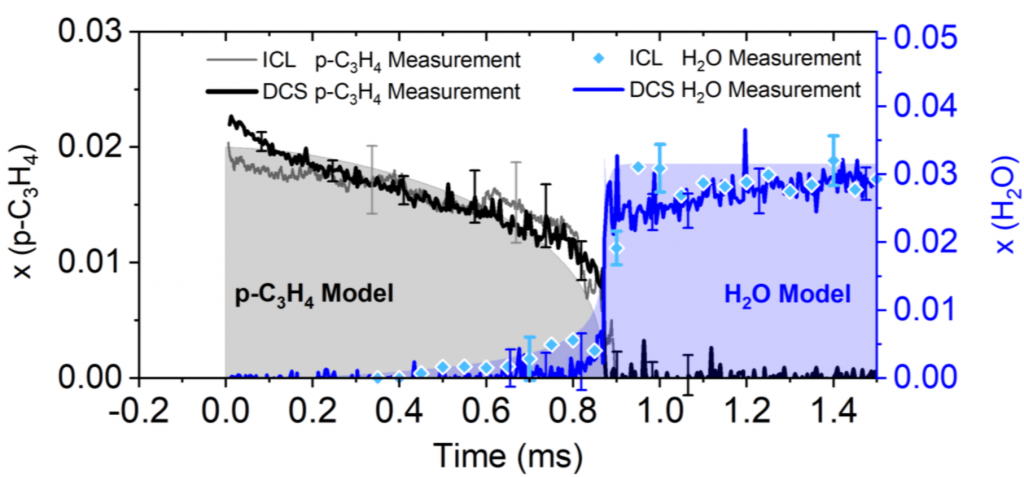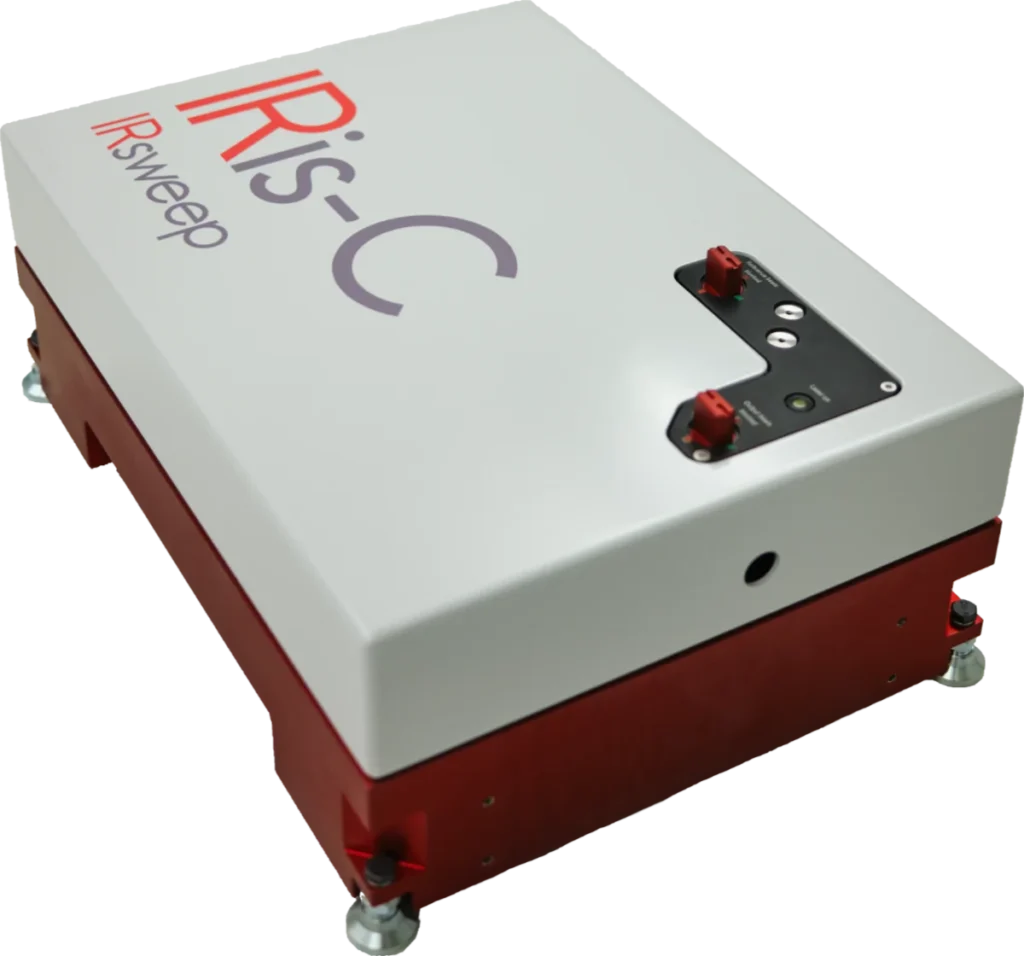Combustion diagnostics

A common challenge in combustion absorption spectroscopy is the simultaneous observation of multiple species on short time scales. This is often done with a dedicated laser system per species, which limits the number of observable molecules to very few, due to overall system complexity. Broadband laser systems are a possible solution to this problem, but swept sources are often too slow to capture the dynamics, especially in shock tubes.
Absorption spectroscopy is an important tool for studying combustion processes. The mid-IR range, where the fundamental vibrational excitations can be studied, is especially interesting.
With the IRis-F1 dual-comb spectrometer, all laser modes are detected simultaneously with a single line of sight, allowing to observe multiple species at sub-microsecond time scales. Speciation with up to four species has been done, as well as the measurement of activation energies and reaction rates.

Dual-comb spectroscopy is an interferometric technique that works without moving parts. It is available for the first time as an integrated commercial solution in the mid-IR by IRsweep as the IRis-F1. Due to the use of Quantum Cascade Laser frequency combs, high-power mid-IR light is available.
The IRis-F1 has been used by a number of renowned combustion research labs, specifically on shock tubes, including the Hanson Lab at Stanford University where a paper published in 03.2020 (Pinkowski et al., 2020) shows the pyrolysis of a fuel (Propyne, broadband absorber) and the subsequent oxidation with the generation of water (narrowband absorber). The measured absorption as a function of wavelength and time is shown in Figure 1 and the corresponding speciation is shown in Figure 2, where it is also compared to a suite of dedicated analysis lasers, where one laser and detector are needed per species.

What our customers say about IRis-F1
This combination of features of IRis-F1 is very useful in high temperature gas dynamics applications and we plan to continue to exploit this technique in our laboratory for both kinetics studies of new species and other novel diagnostic applications.
Dr. Christopher Strand of Prof. Ron Hanson’s Lab, Stanford University, California
Senior Research Engineer in the Department of Mechanical Engineering



